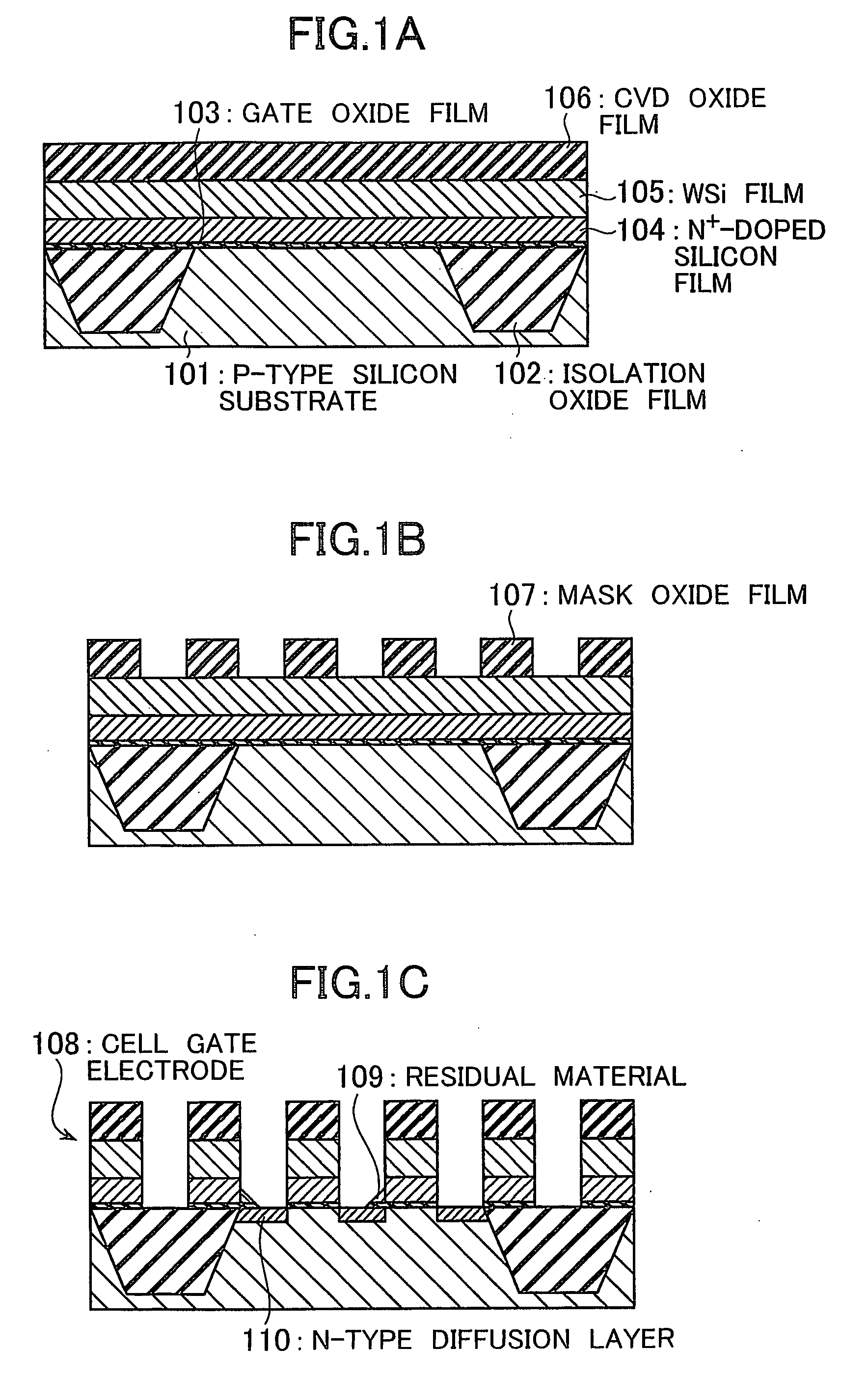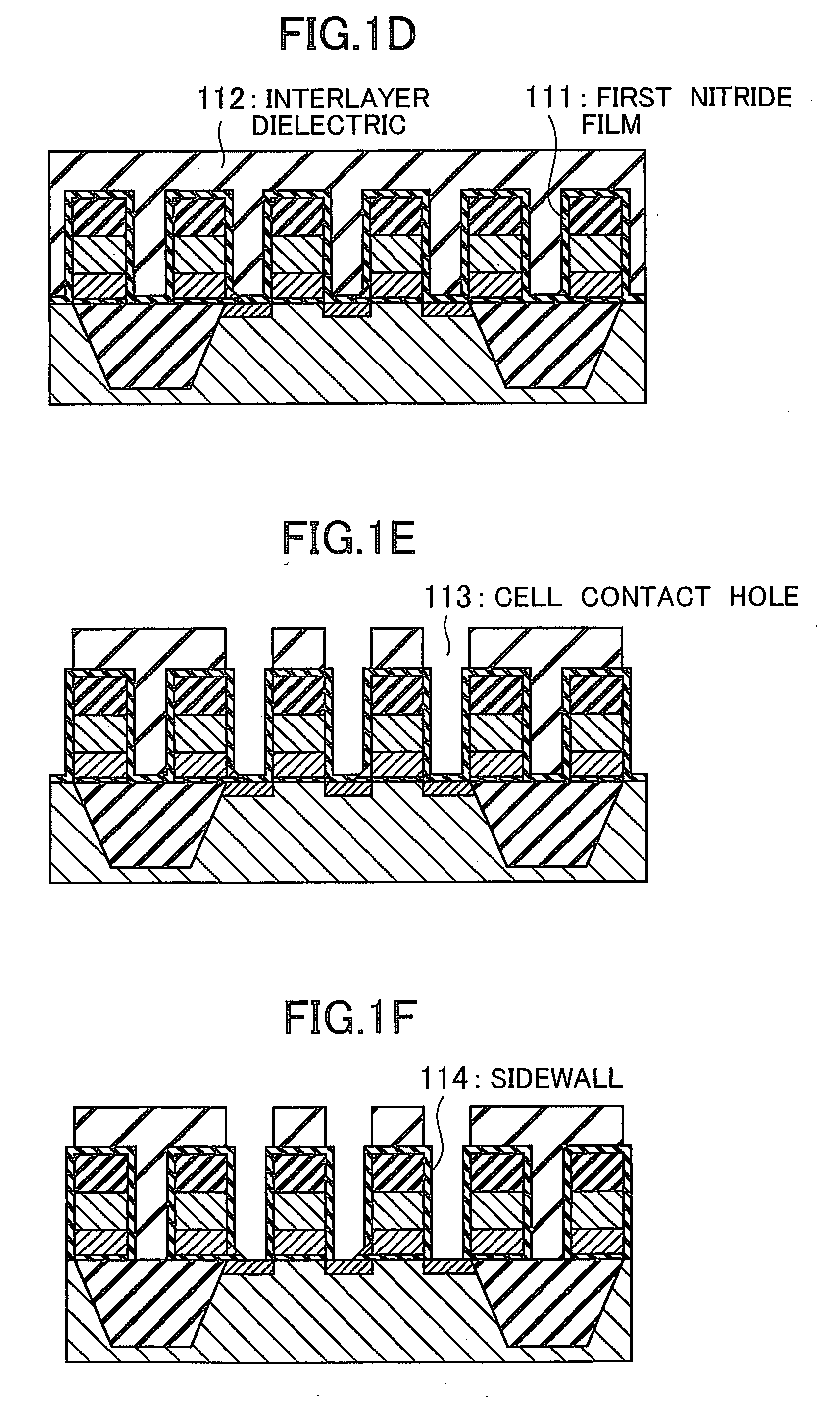Method of manufacturing semiconductor device for providing improved isolation between contact and cell gate electrode
a technology of semiconductor memory and contact, which is applied in the direction of semiconductor memory devices, basic electric elements, electrical appliances, etc., can solve the problems of reducing the dimension of the semiconductor memory cell, reducing the gate length below the quarter micron order, and avoiding short-circuiting
- Summary
- Abstract
- Description
- Claims
- Application Information
AI Technical Summary
Benefits of technology
Problems solved by technology
Method used
Image
Examples
first embodiment
[0027]Referring to FIGS. 2A to 2K, a description is given below of an exemplary process of manufacturing a semiconductor device in a first embodiment of the present invention. The manufacture process of this embodiment begins with forming isolation oxide films 2 with a depth of 0.25 to 0.40 μm on the surface of a P-type silicon substrate 1 by using a trench isolation technique. Gate oxide films 3 are then formed with a thickness of 5 to 10 nm in respective active regions isolated by the isolation oxide films 2. This is followed by sequentially forming an N+-doped silicon film 4 with a thickness of 0.1 to 0.15 μm, a tungsten silicide film 5 with a thickness of 0.1 to 0.15 μm, and a CVD oxide film 6 with a thickness of 0.2 to 0.3 μm to cover the P-type silicon substrate 1, as shown in FIG. 2A.
[0028]Subsequently, mask oxide films 7 with a width of 0.11 to 0.2 μm are formed by etching the CVD oxide film 6 with a photoresist pattern used as a mask, as shown in FIG. 2B. Furthermore, cell ...
second embodiment
[0033]A description is then given of an exemplary process of manufacturing a semiconductor device in a second embodiment of the present invention, referring to FIGS. 3A to 3K. The first embodiment is directed to provide a solution to the problem that the local residuals 9 formed of N+-doped silicon due to the formation of the minute particles of 0.05 to 0.15 μm working as a mask in the etching process of the N+-doped silicon film 4.
[0034]On the other hand, the second embodiment is directed to avoid a problem caused by minute particles of 0.05 to 0.15 μm produced in etching the CVD oxide film 6 with a photoresist pattern used as a mask.
[0035]As shown in FIG. 3A, the process of the second embodiment begins with forming the isolation oxide films 2, the gate oxide films 3, the N+-doped silicon film 4, the tungsten silicide film 5, and the CVD oxide film 6 in the same manner as that of the first embodiment. This is followed by forming the mask oxide films 7 by etching the CVD oxide film ...
PUM
 Login to View More
Login to View More Abstract
Description
Claims
Application Information
 Login to View More
Login to View More - R&D
- Intellectual Property
- Life Sciences
- Materials
- Tech Scout
- Unparalleled Data Quality
- Higher Quality Content
- 60% Fewer Hallucinations
Browse by: Latest US Patents, China's latest patents, Technical Efficacy Thesaurus, Application Domain, Technology Topic, Popular Technical Reports.
© 2025 PatSnap. All rights reserved.Legal|Privacy policy|Modern Slavery Act Transparency Statement|Sitemap|About US| Contact US: help@patsnap.com



